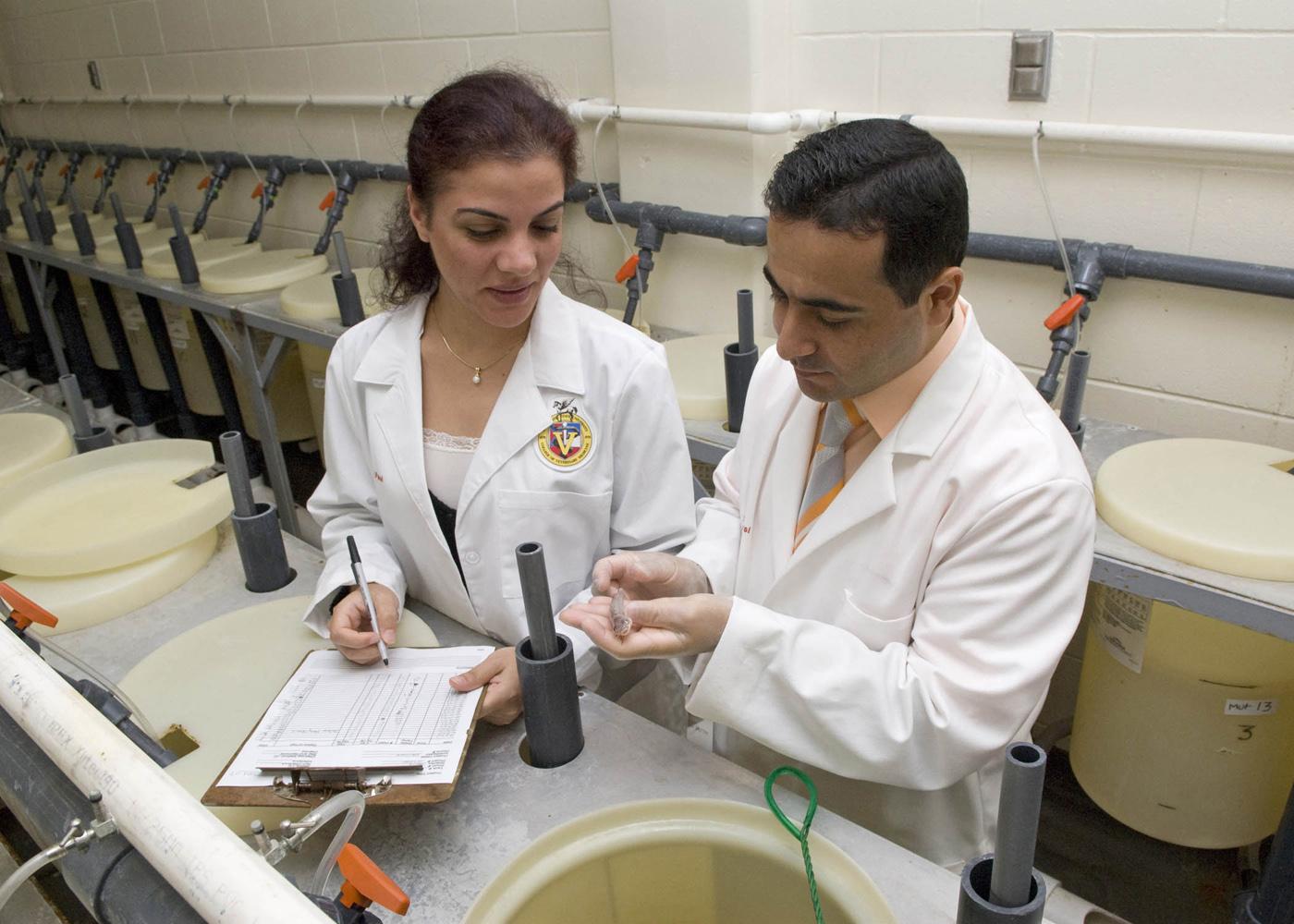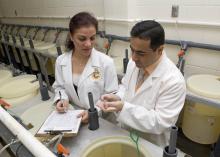Information Possibly Outdated
The information presented on this page was originally released on November 1, 2007. It may not be outdated, but please search our site for more current information. If you plan to quote or reference this information in a publication, please check with the Extension specialist or author before proceeding.
Catfish studies under way to reduce economic losses
MISSISSIPPI STATE -- Mississippi State University researchers are working to develop a new vaccine to protect catfish from a devastating bacterial disease that costs the industry millions of dollars each year.
The U.S. Department of Agriculture has awarded more than $371,400 to MSU's College of Veterinary Medicine to study enteric septicemia, or ESC. Researchers believe a modified live vaccine against the disease could dramatically reduce economic losses to catfish farmers.
Project director Attila Karsi, an assistant research professor, said enteric septicemia is a bacterial disease that costs the catfish industry $50 million to $60 million each year. First identified in 1976, the disease has impacted Mississippi's catfish production every year. The state's catfish industry was valued at nearly $273 million in 2006.
“Finding safe and effective vaccines to protect the nation's most important aquaculture industry is an urgent priority,” Karsi said.
Dr. Mark Lawrence, associate professor in the CVM's Department of Basic Sciences, said the goal is to help producers by improving catfish profitability.
“We are convinced that development of effective vaccines is the smartest and fastest approach to ease the disease problem in the catfish industry,” Lawrence said.
Charlie Hogue, catfish specialist with MSU's Extension Service, said ESC and columnaris are the most common diagnoses made in Mississippi aquaculture laboratories. ESC is present in spring and fall when water temperatures are between 72 and 82 degrees.
“Although ESC can be in food-fish production ponds, it mainly impacts fingerling ponds where fish are kept in the largest concentrations. Once the disease is present, it can spread pretty quickly,” Hogue said.
Farmers have two options in addition to the existing ESC vaccine. Hogue said they can wait until they see ESC symptoms and provide medicated feeds, or they can stop all feeds when they see symptoms. By withholding feed, the fish are not taking in as much of the bacteria that are present in the water.
Karsi said the three-year project will involve functional genomics to determine virulence genes of the bacterial pathogen causing the disease. Researchers will genetically modify the bacteria and assess the modified strains' vaccine potency. Once the most promising modified live vaccines have been developed, researchers will test for the most effective method.
“We want to discover the major genes and their associated factors that regulate virulence of the bacteria, and then produce vaccines by stopping the function of those genes,” Karsi said.
The project has an additional educational aspect. Researchers will develop a workshop for faculty members and students.
“Computational biology students will learn about the use of microarray technology in gene expression analysis and will be given the opportunity to get involved in data mining as their class projects,” Karsi said.
The professor said researchers are excited about the benefits of the project.
“By revealing bacterial genome secrets, we will be able to understand microbial pathogenesis and then develop modified live vaccines to prevent economic losses to the catfish industry while educating future scientists on cutting-edge research,” Karsi said.



